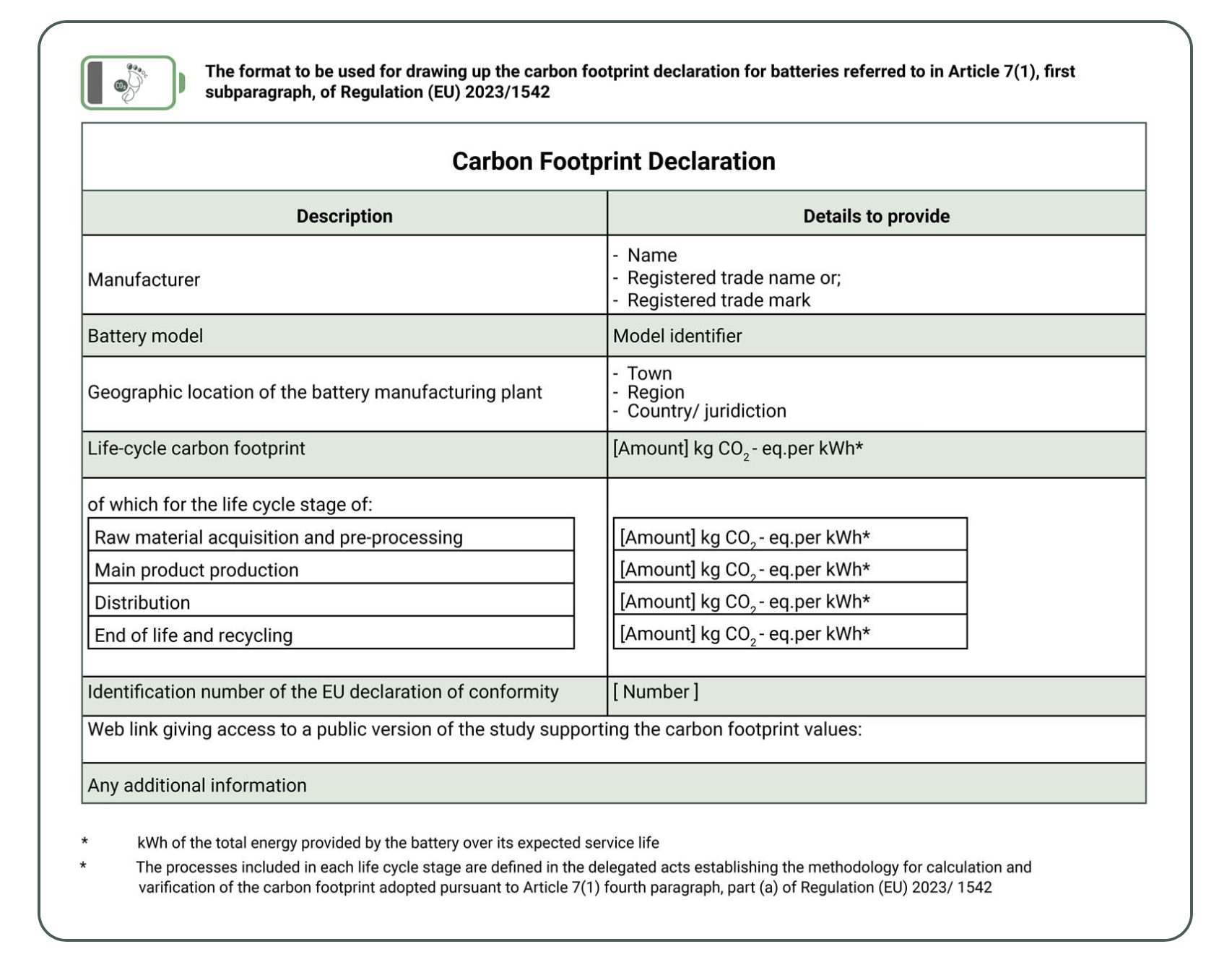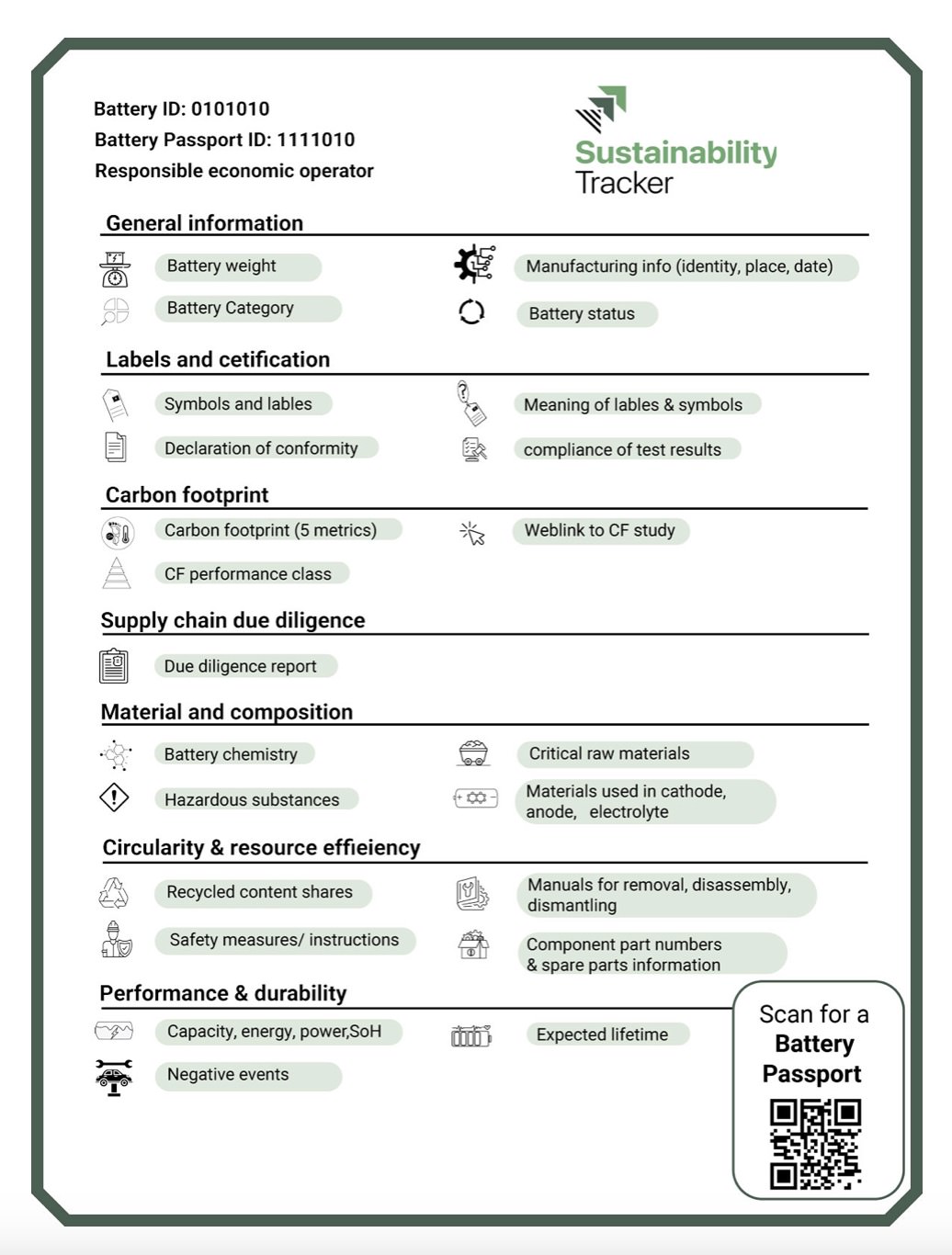- Blog
- EV Battery Passports - Everything You Need to Know as a Car Dealer
EV Battery Passports - Everything You Need to Know as a Car Dealer
Learn what the EU battery passport means for used EV dealers. See what’s changing under the EU battery regulation and how to prepare before 2027.

À retenir
- Battery passports will become mandatory for all EV and industrial batteries over 2 kWh starting in 2027.
- They’ll be accessible through a QR code and contain info like carbon footprint, battery health, and production details.
- Used car dealers won’t have to manage these passports, but they should know how to check and explain them.
- Battery data could influence resale value, so getting familiar with it now can help you stay competitive.
More and more EVs are entering our market, and their batteries are beginning to come with digital documents of their own.
You’ve maybe already heard about the upcoming EU battery passport. While it won’t affect your day-to-day business just yet, it’s something every used EV dealer in the EU should be aware of.
So, let’s see what the battery passport is, when it becomes mandatory, and what it could mean for your dealership in the years ahead.
The EU Battery Regulation
In short, battery passports are part of a larger effort by the EU to make batteries more sustainable, transparent, and trackable throughout their lifecycle.
The main regulation behind this is the EU Battery Regulation (Regulation (EU) 2023/1542), which entered into force in August 2023.
According to this regulation, batteries will gradually need to meet new requirements, starting with carbon footprint reporting, and later including digital battery passports for EV batteries.
As of 2025, battery makers have to include a carbon footprint report with every new EV or industrial battery they sell in the EU.
There’s a fixed format they have to use, and it includes factors like the battery model, where it was made, and a breakdown of emissions at each stage. Here’s what it looks like:

Image source: Industrial Sustainability Solutions
Since the EU is carrying out a broader plan to improve battery sustainability step by step, some of the data from these carbon reports will also show up in the upcoming digital battery passports.
This brings us to the next big change, the battery passports themselves.
What is an EV Battery Passport?
‼️ From 2027 onwards, all EV and industrial batteries over 2 kWh will need to have a digital battery passport that travels with the battery for its entire life.
So, the basic info will be printed on the batteries themselves. However, all EV batteries will also have to have a scannable QR code which shows the battery passport with detailed data on the battery’s origin, specifications, carbon footprint and recycled content.

Image source: Industrial Sustainability Solutions
What information can you find in the Battery Passport?
Based on the current carbon footprint reports for batteries, here’s what we’ll likely see in battery passports:
- Manufacturer and battery model
- Date and place of production
- Battery type and capacity
- Carbon footprint data
- Recycled material content
- Info about raw material sourcing
- Repairability and disassembly instructions
This info will help track the battery through production, use, resale, repurposing, and recycling.
The main purpose of the document
The reason why the EU wants battery manufacturers to outline battery details is to make the entire battery lifecycle more transparent, traceable, and sustainable.
EV buyers will also benefit from this, because they’ll be able to see important data about the battery’s condition, origin, and environmental impact before making a purchase.
In a way, EV battery passports are like a digital service history, but focused entirely on the battery.
And as EV adoption continues to grow across the EU (partly due to EV tax benefits and incentives), buyers are starting to look more closely at the condition and history of the battery.
Who will be affected the most?
The biggest responsibilities will fall on those who have to create and update the passport:
- Battery manufacturers
- Importers
- Car makers
But it doesn’t stop there.
For instance, recyclers and second-life battery companies will use the passport to decide if a battery can be reused.
And of course, used car traders may be expected to check and share battery passport information, especially as it becomes more common. Let’s see how.
Potential impact on used EV dealerships
Even though dealers won’t be the ones creating battery passports, the new rules could still change how you work.
You might need to:
- Check the passport when sourcing used EVs
- Show it to buyers who want more info about battery health, age, or carbon footprint
- Use the data to help explain differences in price, quality, or origin
After all, battery condition is one of the biggest factors in EV depreciation. A car with a well-documented, healthy battery could hold its value better.
In short, you won’t have to manage the passport yourself, but knowing how to read it and talk about it can help build trust with buyers and sell more EVs once these become standard from 2027.
Be ready - How can used EV dealers prepare?
You don’t need to act right away. Still, there are a few simple steps that can help you prepare in advance.
First, you should always stay informed. We suggest bookmarking the EU battery regulation page and checking it occasionally.
Then, as 2027 approaches, you could start asking suppliers and auction platforms if battery passport info will be included in listings.
It’s also a good idea to train your team on basic terms like state of health certificates (SOH), carbon footprint, and battery lifespan.
Most importantly, keep in mind that the regulation is designed to help buyers make better decisions, and that includes your customers. You can position yourself as a reliable source of well-documented, high-quality used EVs.
eCarsTrade propose des ventes aux enchères en ligne de véhicules d'occasion en provenance d'Europe !

